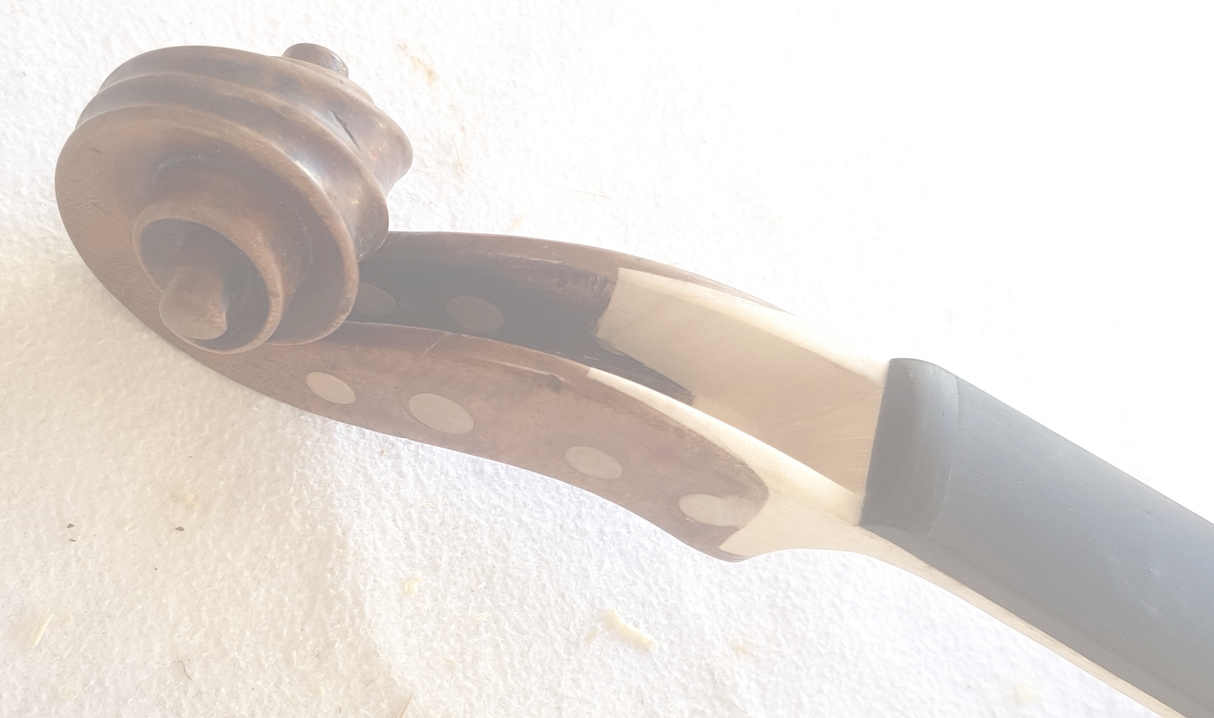
Creating an Online Course in Violin Restoration
When life took an unexpected turn due to the outbreak of the Coronavirus, I started to wonder what would happen in the future with my teaching engagements that I have enjoyed so much over the last 8 years. I have been teaching regularly in many countries including the USA, France and Japan. I was also due to teach in the UK in September 2020, which subsequently had to be cancelled.
My weekly courses are usually either based on restoration work or retouching where each participant brings their own work with them and I would be explaining and showing them my approach to each challenge they are facing. As it is a one-to-one approach, the maximum number of participants tends to be 6, especially when I teach retouching to ensure that I can offer the time and attention required for each member of class.
As violin restorers, we tend to be experts at self-isolating and I often listen to podcasts whilst I am working. In April 2020, I was listening to an American Entrepreneur called Amy Porterfield about creating online courses when the idea started to form in my head of offering an online course about a specific procedure in violin restoration. The idea was that this could be a useful teaching resource for other professional restorers and decided on a violin neck graft as my first course. I have been carrying out neck grafts regularly for the last 24 years – a standard but complex procedure that usually requires a timeframe of around 30 hours or so from start to finish. Embracing the opportunity presented by lockdown, I started preparing for the course, questioning every step I take when carrying out a neck graft and consulting with many of my colleagues how they approach each step and why.
I was introduced to a creative marketeer and specialist filmmaker and from there my idea was brought to life. It was important to us to deliver a course that showcased and aligned with the complexity and intricacy of my work. Each step was captured by film with the restorer in mind and to make the course as professional as possible.
We started our first week of filming in June 2020. Evie has a great eye for getting all the angles and the lighting just right and would often be perched on top of my bench in some awkward position for long periods of time whilst filming. Doing the work itself and being filmed was easier than explaining every step to the camera beforehand, remembering to smile, and not forgetting anything! I would write down prompts and bullet points and fix them to the wall out of sight of the camera to be able to glance at if necessary. When left to your own devices you tend to get into a rhythm and the restoration works flows so naturally but when there is an addition of a camera and creative director watching your every move, the challenge is to remain focused and not let the thought of being filmed tip you off balance. There could be any number of re-takes for various reasons and it was always a relief to get on with the actual work. The last stage of retouching turned into an unexpected challenge as the camera had to be really close up and I tend to move the instrument around a lot to check my work from different angles and for possible reflection issues.
An average of about 5 days’ work turned into 16 days of filming altogether. We had 68 hours of film footage to condense into an online course of around 12 hours. The editing process has taken the best part of 6 months to complete and all the hours of hard work were well worth the effort after seeing the end result and we are now in the very final stages of getting the online course ready for sale.
The course will be available on Teachable and is split into 2 parts, which can be bought separately. The first part includes 15 Chapters which show fitting the peg bushings, removing the neck and the old French neck graft, fitting pieces into the cut outs, fitting the new through-graft, fingerboard and nut done and the pegbox and the neck roughly shaped. The second part consists of 10 Chapters which show the preparation of the mortice, fitting, gluing and final shaping of the neck and finishing the staining and retouching. Included in the course are downloadable files of measurements, templates and tools and materials needed.
The course will also have the option of English and Mandarin Chinese captions and in future, other language captions might be added depending on demand.
The link to the course will be available on my website soon.

